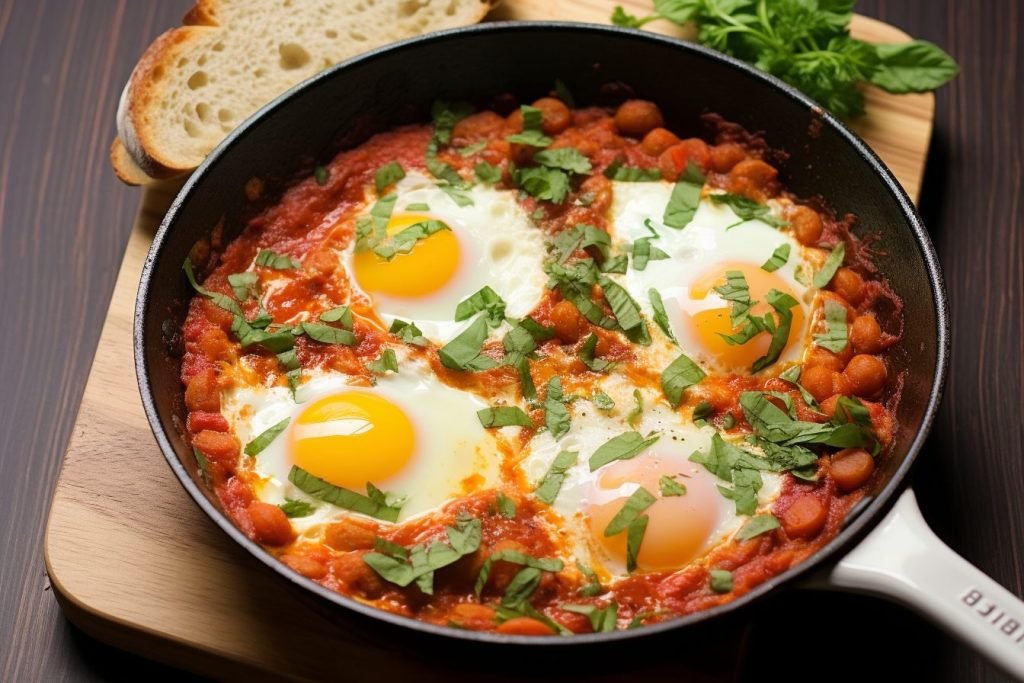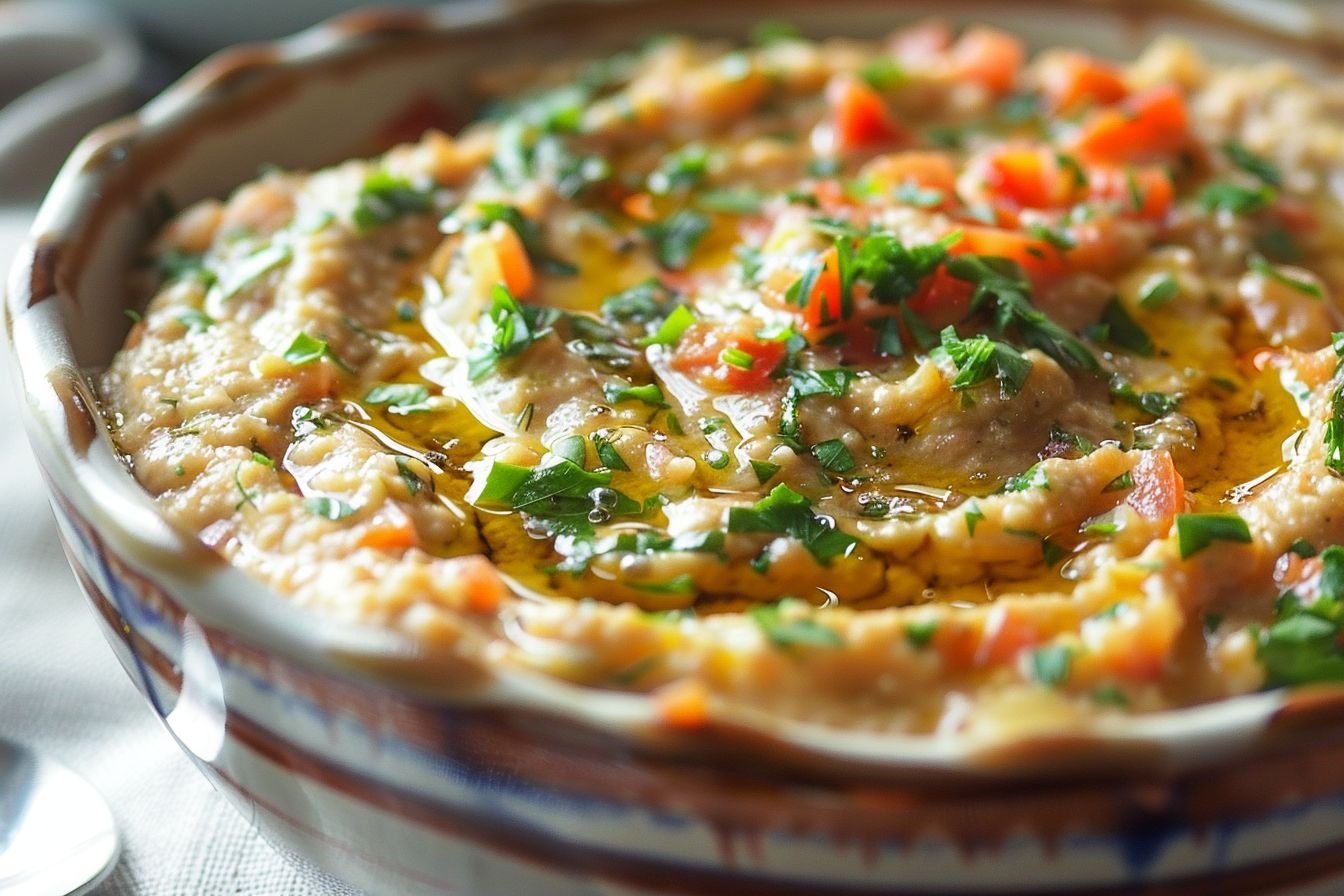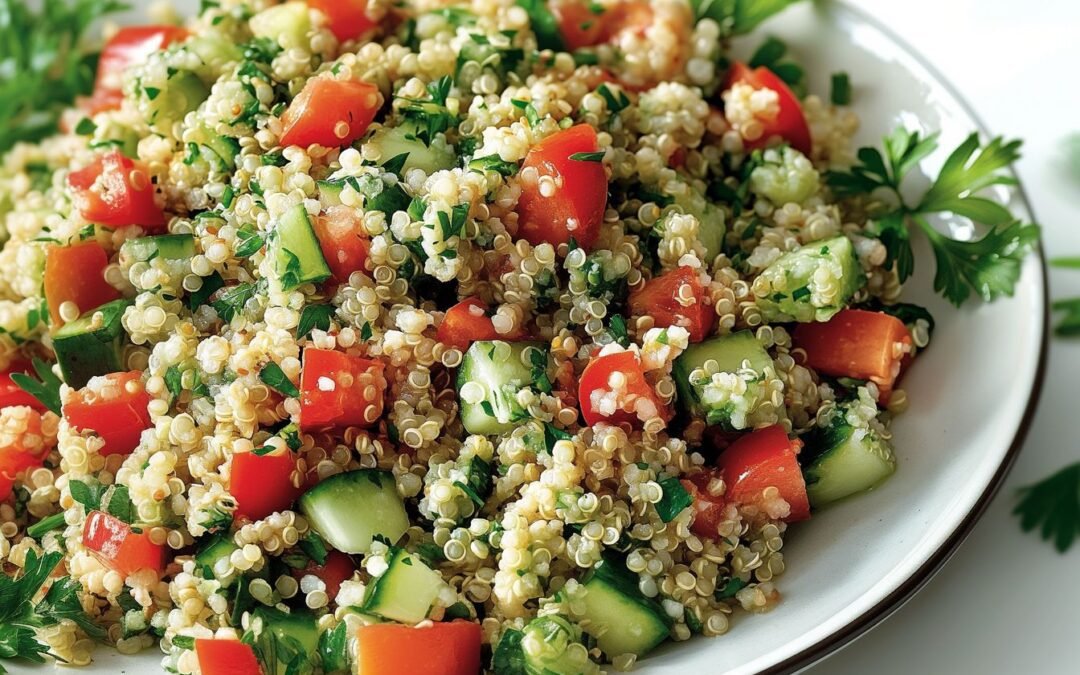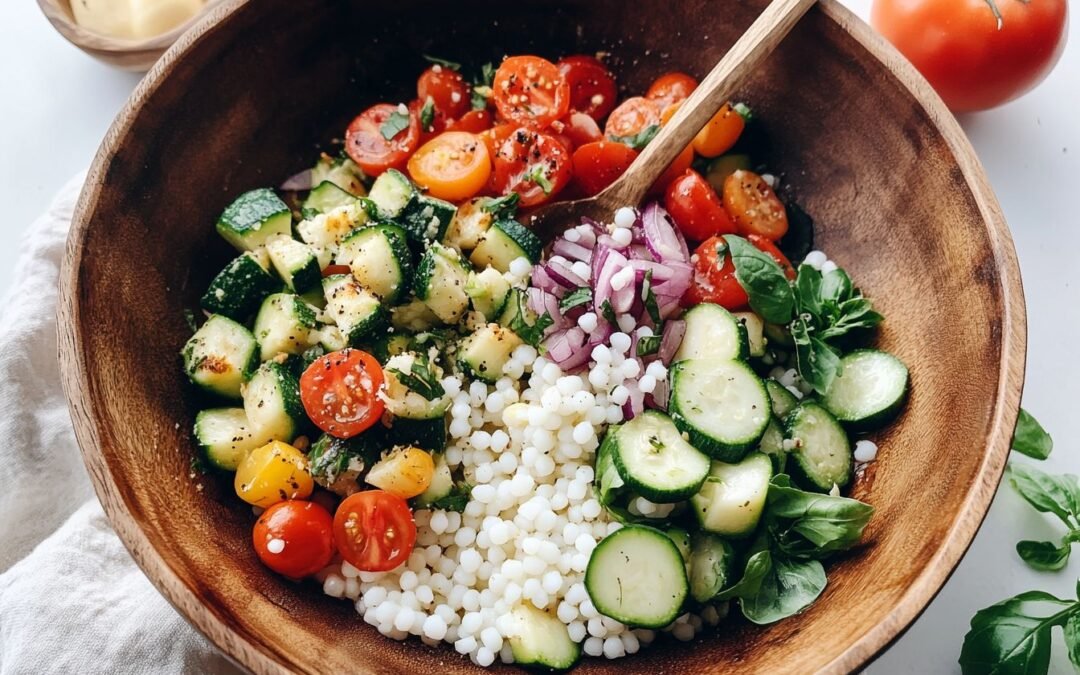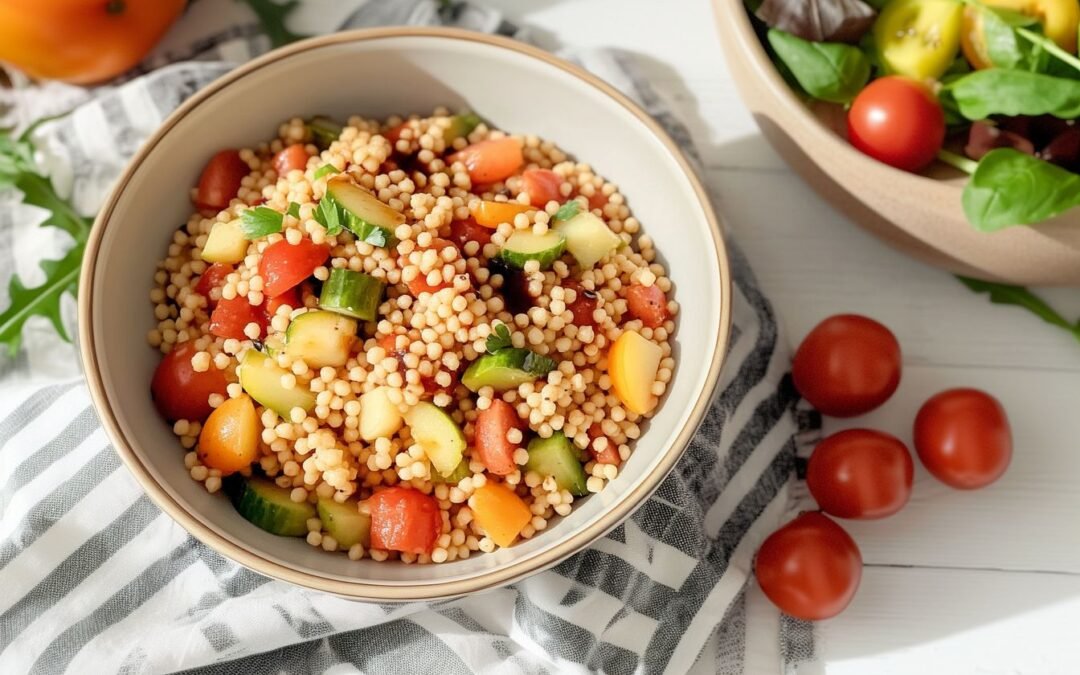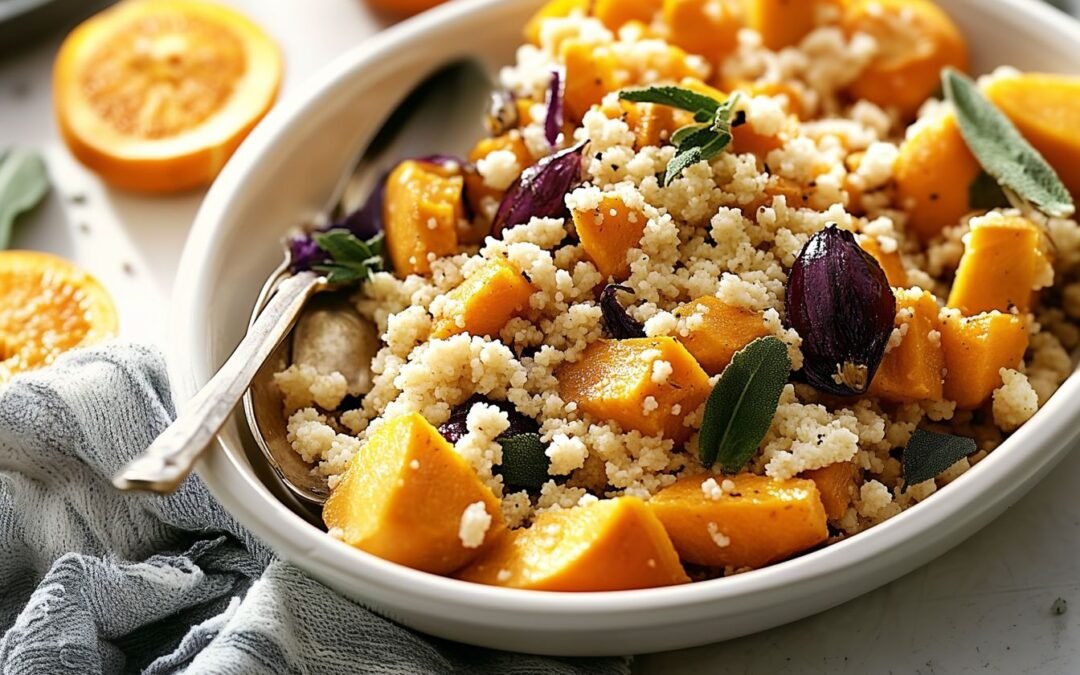I am a big fan of Mediterranean cuisine, and one of my favorite dishes is baba ganoush. This flavorful dip is made from roasted eggplant, garlic, and tahini, and it’s perfect for dipping pita bread or veggies. But have you ever tried baba ganoush with feta? Trust me, it takes the dish to a whole new level of deliciousness.
To make baba ganoush with feta, you’ll need a few simple ingredients: olive oil, eggplant, red bell pepper, onion, garlic, tomato, feta cheese, lemon juice, salt, and pepper. Roasting the eggplant, pepper, onion, and garlic in the oven brings out their natural sweetness and smoky flavor, while the feta cheese adds a tangy and salty note to the dip. It’s a perfect combination of flavors and textures that will leave your taste buds wanting more.
History of Baba Ganoush with Feta
Baba ganoush is a traditional Middle Eastern dish made with roasted eggplant, tahini, garlic, and lemon juice. It’s a popular appetizer and dip, and it’s often served with pita bread or vegetables.
Feta cheese, on the other hand, is a brined cheese that originated in Greece. It’s made from sheep’s milk or a combination of sheep’s and goat’s milk, and it has a tangy and salty flavor.
The combination of baba ganoush and feta is a relatively new one. It’s not clear exactly where or when this combination first appeared, but it was likely invented by someone who wanted to add a little extra flavor and texture to their baba ganoush.
Today, this combination is a popular variation of the traditional dish. The creamy and slightly salty feta cheese pairs perfectly with the smoky and tangy flavors of the baba ganoush. It’s a simple yet delicious twist on a classic dish, and it’s sure to be a hit at your next party or gathering.
So there you have it, a brief history of baba ganoush with feta. Whether you’re a fan of traditional baba ganoush or you prefer the feta version, there’s no denying that this Middle Eastern dip is a crowd-pleaser.
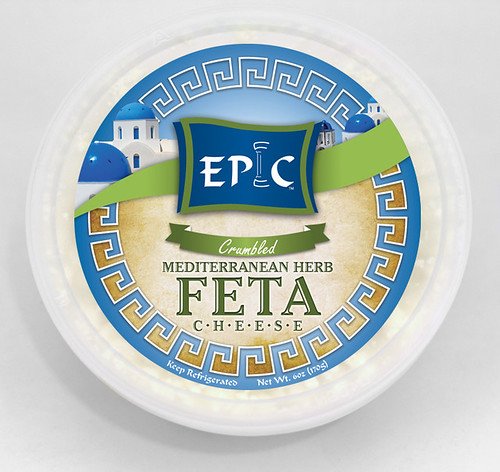
Ingredients:
- 3 tablespoons of olive oil
- 1 eggplant, weighing around 2.5 to 3 lbs
- 1/2 medium onion, cut into 4 wedges
- 1 red bell pepper, cored and cut into 4 large pieces
- 2 peeled garlic cloves
- 1 tomato
- 3/4 cup of crumbled feta
- 1 tablespoon of fresh lemon juice
- Salt and pepper to taste
How to Make Baba Ganoush with Feta?
-
To mitigate potential bitterness in larger eggplants, sprinkle the cut sides with salt and let them rest for 30 minutes. Rinse the salt thoroughly and pat the eggplant dry with paper towels. Brush the eggplant generously with olive oil.
-
Preheat your oven to 375 degrees Fahrenheit (190 degrees Celsius). Place the eggplant halves on a baking sheet and roast for 15 minutes. While the eggplant roasts, coat the red pepper, onion, and garlic cloves with olive oil. After 15 minutes, add the oiled vegetables and a whole tomato to the baking sheet with the eggplant. Continue roasting all vegetables for an additional 45 minutes or until tender.
-
Allow the roasted vegetables to cool slightly. Add the roasted onion and garlic cloves to a food processor or blender. Remove the skins from the pepper and tomato. Scrape out the flesh of the eggplant and discard the skin. Combine the roasted vegetables, feta cheese, lemon juice, and one tablespoon of olive oil in the food processor. Pulse the mixture until it reaches your desired consistency, either slightly chunky or completely smooth.
-
Season the Baba Ganoush with salt and pepper to taste. Garnish with fresh herbs of your choice, such as parsley or mint, before serving.
Serving Suggestions
Garnishes
To add a pop of color and flavor to your baba ganoush with feta, consider garnishing it with some fresh herbs such as parsley, cilantro, or mint. You can also sprinkle some sumac or paprika on top for an extra kick. For a crunch, add some toasted pine nuts or chopped walnuts.
Pairing with Dishes
Baba ganoush with feta is a versatile dish that can be paired with a variety of foods. Here are some suggestions:
- Pita bread or chips: Serve baba ganoush with feta as a dip with some warm pita bread or crispy pita chips.
- Grilled meats: Baba ganoush with feta pairs well with grilled meats such as lamb, chicken, or beef.
- Roasted vegetables: Serve baba ganoush with feta alongside roasted vegetables such as eggplant, zucchini, or bell peppers.
- Salad: Use baba ganoush with feta as a dressing for a Mediterranean-inspired salad with mixed greens, cherry tomatoes, cucumbers, and olives.
Nutritional Information
Calories
One serving of this baba ganoush contains around 150 calories. This makes it an excellent option for those who are trying to maintain a healthy weight.
Fat
This is a good source of healthy fats. One serving contains around 10 grams of fat, most of which comes from olive oil and tahini. These fats are essential for maintaining healthy skin, hair, and nails.
Protein
It is also a good source of protein. One serving contains around 5 grams of protein. This makes it an excellent option for vegetarians and vegans looking for plant-based protein sources.
Fiber
One serving of this dip contains around 4 grams of fiber. This makes it an excellent option for those who are looking to increase their fiber intake. Fiber is essential for maintaining healthy digestion and preventing constipation.
Vitamins and Minerals
Baba ganoush with feta is a good source of vitamins and minerals such as Vitamin C, Vitamin K, Folate, and Potassium. These vitamins and minerals are essential for maintaining healthy bones, teeth, and muscles.
Storing and Preservation Tips
Firstly, storing baba ganoush with feta in an airtight container in the refrigerator is important. This will help to keep the dip fresh for up to 5 days. If you want to keep it for longer, you can freeze it for up to 3 months. Just make sure to thaw it in the refrigerator before serving.
When it comes to serving baba ganoush with feta, I recommend taking it out of the refrigerator at least 30 minutes before serving. This will allow the dip to come to room temperature and enhance the flavors.
If you have leftovers, you can use them in a variety of ways. This makes a great spread for sandwiches and wraps, or you can use it as a dip for vegetables or pita chips. You can even mix it with some cooked pasta for a quick and easy pasta salad.
Common Mistakes to Avoid
Overcooking the Eggplant
One of the biggest mistakes people make when making this dip is overcooking the eggplant. If you cook the eggplant for too long, it will become mushy and lose its flavor. To avoid this, make sure to keep an eye on your eggplant while it’s cooking. You want it to be tender, but not falling apart.
Using Too Much Feta
While feta is a delicious addition to baba ganoush, it’s important not to go overboard. Using too much feta can overpower the other flavors in the dish. I recommend using about 1/4 to 1/2 cup of crumbled feta for a standard recipe.
Not Letting the Dip Chill
Baba ganoush with feta is best served chilled, so make sure to give it enough time to chill in the fridge before serving. I recommend letting it cool for at least an hour before serving, but you can also make it a day ahead of time and let it chill overnight.
Conclusion
I hope you enjoyed learning about my favorite baba ganoush recipe with feta. Throughout this article, I’ve shared with you some tips and tricks that I’ve learned over the years to help make this dish even more delicious.
By using fresh ingredients and taking the time to properly roast the eggplant, you can elevate this classic Middle Eastern dip to a whole new level. Adding feta cheese gives it a tangy and salty flavor that perfectly complements the smoky eggplant.
Next time you’re looking for a healthy and flavorful appetizer or snack, give this baba ganoush with feta recipe a try. I’m confident that you won’t be disappointed!
Let me just mention this – baba ganoush pairs perfectly with shakshuka with garbanzo beans.
Get that recipe now (by clicking the image below):
